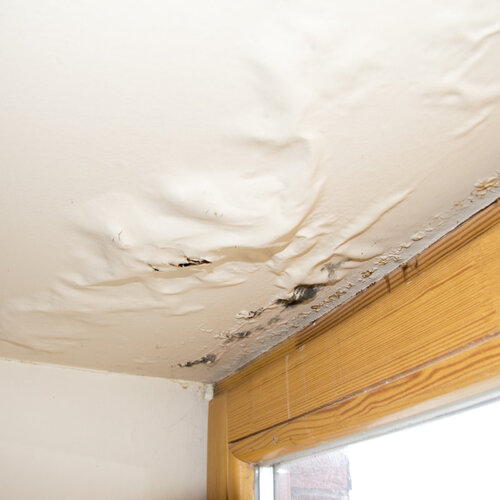How to Stop the Six Most Common Water Leaks in Your Home
How to Stop the Six Most Common Water Leaks in Your Home
Blog Article
What are your opinions with regards to How to detect water leaks in your home?

Leakages not only cause waste of water but can also create unneeded damages to your house and also promote undesirable organic development. Water leaks may go unnoticed since many of the pipework in our home is concealed. By understanding and also looking for everyday scenarios that trigger leaks, you can protect your residence from future leakages and unneeded damage. Today, we will certainly look at six leakage causes that might be triggering your pipelines to drip.
Intruding roots
Many water leaks start outside your home rather than inside it. If you discover a sudden reduction in water stress, say in your faucet, take time to head out and also analyze your backyard. You could see damp patches or sinkholes in your lawn, and that could suggest that tree origins are invading water lines triggering water to permeate out. You can have your plumber look for intrusion, specifically if you have trees or hedges near your building.
Corroded water systems
As time goes by, your plumbing system ages and also corrosion such as rust might start eating away the pipelines. This might be the source of staining or warping on your pipes. This asks for an inspection with your plumber right away. Consider replacing the pipes considering that they are at a higher threat of deterioration than the more recent designs if our plumbing system is old.
Defective Pipeline Joints
The factor at which your pipes connect is often the weakest link in the waterline. Pipeline joints can weaken over time, leading to water leaks. The majority of pipe joints are not quickly visible. If you have loud pipes that make ticking or banging noises, especially when the warm water is activated, your pipeline joints are most likely under a lot of stress. It is recommended to have your plumber check your system annually.
Instant temperature modifications.
Severe temperature level changes in our pipelines can create them to expand as well as contract unexpectedly. This growth and also tightening might cause splits in the pipelines, especially if the temperature level are listed below cold.
Poor Water Connectors
Sometimes, a leakage can be brought on by loosened tubes as well as pipes that provide your home appliances. More often than not, shifting is what triggers the loose water Connections. You could locate in the case of a washing maker, a tube may spring a leakage as a result of drinking during the spin cycle. In case of a water links leak, you might see water running straight from the supply line or puddles around your appliances.
Obstructed Drains
Blocked drains pipes may be aggravating and also inconveniencing, but they can sometimes wind up creating an overflow causing rupture pipelines. Keep getting rid of any type of materials that might go down your drains that might clog them to avoid such inconveniences.
All the above are reasons for leakages yet not all water leaks arise from plumbing leakages; some leakages may originate from roof covering leakages. All leakages should be fixed right away to stay clear of water damage.
Leaks not only cause waste of water however can also cause unnecessary damages to your home and also advertise unwanted organic growth. By recognizing and also looking for daily circumstances that trigger leaks, you can protect your residence from future leakages and unnecessary damages. Today, we will certainly look at 6 leak triggers that might be triggering your pipelines to trickle.
At times, a leakage can be created by loose hoses and pipes that supply your appliances. In situation of a water connections leakage, you may observe water running straight from the supply line or pools around your appliances.
How To Check For Water Leak In Your Home
How To Check for Leaks
The average household's leaks can account for nearly 10,000 gallons of water wasted every year and ten percent of homes have leaks that waste 90 gallons or more per day. Common types of leaks found in the home are worn toilet flappers, dripping faucets, and other leaking valves. These types of leaks are often easy to fix, requiring only a few tools and hardware that can pay for themselves in water savings. Fixing easily corrected household water leaks can save homeowners about 10 percent on their water bills.
To check for leaks in your home, you first need to determine whether you're wasting water and then identify the source of the leak. Here are some tips for finding leaks:
Take a look at your water usage during a colder month, such as January or February. If a family of four exceeds 12,000 gallons per month, there are serious leaks.
Check your water meter before and after a two-hour period when no water is being used. If the meter changes at all, you probably have a leak.
Identify toilet leaks by placing a drop of food coloring in the toilet tank. If any color shows up in the bowl after 10 minutes, you have a leak. (Be sure to flush immediately after the experiment to avoid staining the tank.)
Examine faucet gaskets and pipe fittings for any water on the outside of the pipe to check for surface leaks.
Undetected water leaks can happen without the home or business owner even realizing. If you suspect a water leak, but not able to find the source. It is time to contact a professional water leak detection service, The Leak Doctor.
How To Find a Water Leak In Your Home
https://www.leakdoctor.com/blog/How-To-Check-For-Water-Leak-In-Your-Home_AE197.html

Hopefully you enjoyed our piece on How to Find Water Leaks. Thanks so much for spending some time to read through our content. Enjoyed our content? Please share it. Help other people locate it. Many thanks for going through it.
View Website Report this page